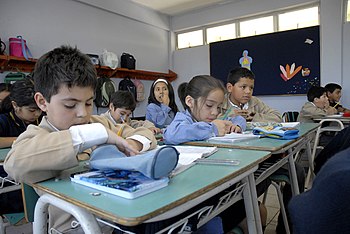
It's possible to have fun with vocabulary games. You can have kids line up on a map, and then they take turns jumping to letters on the map that correspond with the vocabulary word. The second kid might be the one to go to the map that starts with "m", while the third child would go to the map that begins with "d." It is possible to set a time limit or have the kids compete.
Animal Planet
Animal Planet has many educational and fun activities that your child can enjoy, whether he or she is new to the animal kingdom. These games can be used to reinforce content from the classroom. One of these games is "Guess in 10": World of Animals. This game is played with matching cards. They contain clues and hints as well as interesting facts about each animal. It can help you develop social skills and problem-solving ability, and it also promotes creativity.
Many of the games in the series are cooperative and allow children to play in teams. Each team can attempt to identify an animal's name. The team that gets the most correct guesses wins. Another game is Look and Identify. In this game, children are given photos of different animals and asked to identify them. You get brownie points for correctly describing the animal.
States of America
The States of America 2nd-grade learning games offer many benefits to your students. These games can help your child learn the names and capitals of the United States, as well as other useful information about the country. These games can also be very entertaining and help to motivate reluctant students. Animations that follow students' movements can be used to make the various states come alive. This may encourage them to play the game longer. It is important to remember that these games can frustrate children.

Make a game with your children to help them place the states onto a map. This game will also give them practise with spatial awareness, as they have to balance, stack, and rotate the states. The game can be played with multiple players at once, and there are also modes that involve learning the names of the states.
World Cities
Games called World Cities are fun ways for children to learn more about cities and countries around the world. These games can be modified for different ages and abilities. These games are suitable for children from six to eight years of age. They can also practice their knowledge of the United States by placing their planes on the most efficient routes between major cities.
These games can be used by children to teach them about the different states, countries, and continents. You can use the games to help you improve your map skills. You can see the different countries and how they trade with each other.
Cloud Hoppers
Cloud Hoppers is an educational boardgame that helps children to learn addition and subtraction facts. It is characterized by beautiful artwork and solid game pieces. The rulebook includes an interesting story. This game works best for kids aged 5-10 years. It helps children to master multiplication.
It is interactive and a great tool to help students learn math, science, and language. There are 2 free levels to get started, with 21 more games available through in-app purchases.

TeachMe - 2nd Grade
TeachMe 2ndgrade learning games can be a fun, effective way for your child to learn math. The interactive games include math, science, and language learning lessons. The app comes with two free games and 21 paid in-app. The app encourages critical thought, which is a crucial skill in school.
The app includes interactive learning games, bite-sized revision resources, and audio narratives. It even has a timeline which allows you to go back in time. Depending on the game, the child can also play by theme, so they can learn more about different historical events and people.
FAQ
What is the average time it takes to become a teacher in early childhood?
The bachelor's degree program in early childhood education takes four years. The majority of universities require that you take two years to complete general education courses.
After finishing your undergraduate degree, you'll usually be accepted into graduate school. This step allows one to specialize in a certain area of study.
For example, you could choose to focus on child psychology or learning disabilities. After completing your master's you will need to apply to a teacher training program.
This process will take another few years. This period will be filled with learning opportunities and collaborations with educators.
You will also need to pass state exams in order to become a teacher.
This process takes several years, which means you won't be able to immediately jump right into the workforce.
What is the best way to start teaching early childhood?
You must first decide if you want to pursue a career in early childhood education. A bachelor's degree is required if you are interested in a career as an early childhood educator. Some states require that students have a master's level degree.
You will also likely need to attend classes during the summer months. These courses can be taken to learn about topics such as pedagogy and curriculum design.
Many colleges offer associate programs that lead to teaching certifications.
While some schools offer certificates or bachelor's degrees in early childhood education, others only offer diplomas.
There may not be any need for additional training if your goal is to teach from home.
How long should I spend studying each semester
The time you spend studying will depend on several factors.
You may be required to take certain classes annually by some schools. This means that you may not be able to take as many courses each semester. Your advisor can tell you what courses you must take each semester.
What is homeschooling?
Homeschooling refers to a way in which children are taught at home by their parents. This is also called private education, self-education or homeschooling.
Homeschooling is a great option for families who want to teach their kids at home. This method allows children to receive a quality education from home.
Parents educate their children from birth until they graduate high school. They decide which subjects they will study and how long each one should be. The student learns everything on his/her own time.
The parents decide when to teach their children. Many schools recommend children attend classes starting at the age of four or five. Some families decide to wait until kindergarten to start teaching their children.
You can use any number resources to help your children through the curriculum. The lessons can be learned from videos, books and magazines as well as websites.
Many families find that homeschooling works well with their busy schedules. Parents can spend more time with their children than in traditional public schools.
Statistics
- Think of the rhetorical power of nineteenth-century abolitionist Harriet Beecher Stowe, Martin Luther King, Jr., or Occupy Wall Street activists with their rallying cry of “we are the 99 percent.” (bostonreview.net)
- They are more likely to graduate high school (25%) and finish college (116%). (habitatbroward.org)
- In most developed countries, a high proportion of the population (up to 50%) now enters higher education at some time in their lives. (en.wikipedia.org)
- And, within ten years of graduation, 44.1 percent of 1993 humanities graduates had written to public officials, compared to 30.1 percent of STEM majors. (bostonreview.net)
- These institutions can vary according to different contexts.[83] (en.wikipedia.org)
External Links
How To
How do I apply to scholarships?
To apply for scholarship funding, first, make sure you qualify for it. It is possible to receive scholarships if you meet certain requirements.
If you are financially disadvantaged, you may be eligible for a grant. A vocational training course is eligible to be considered for a work study program. You may also be eligible for a grant if you belong to a minority group.
Once you've determined your eligibility for a specific type of scholarship, it is time to start applying.
You can apply online or in person. The type of scholarship you are applying for will affect the process.
Some scholarships require you to submit essays about yourself and why you want the money. Some ask you questions such as "Why did this major interest you?"
Most scholarships require applicants to complete an application form and to send supporting documents.
The information you supply will be reviewed by your scholarship provider. If you have been selected, you will be notified either by email or mail.
Even if your application is not accepted, you may still be eligible to receive a scholarship. Contact your scholarship provider for details.